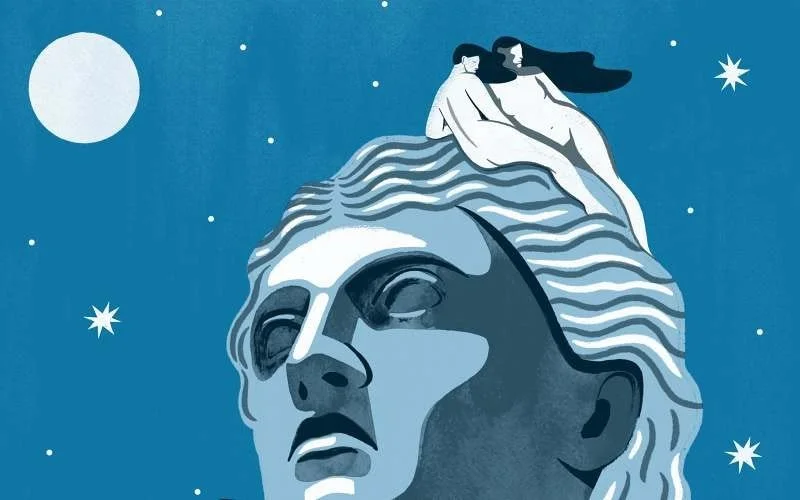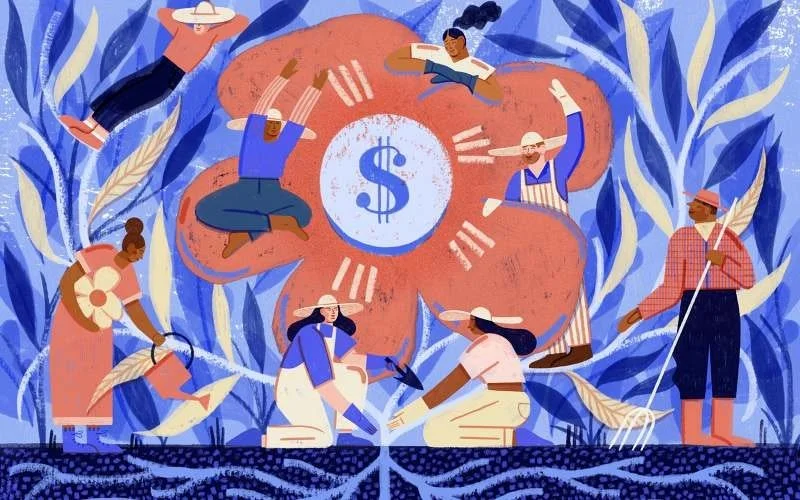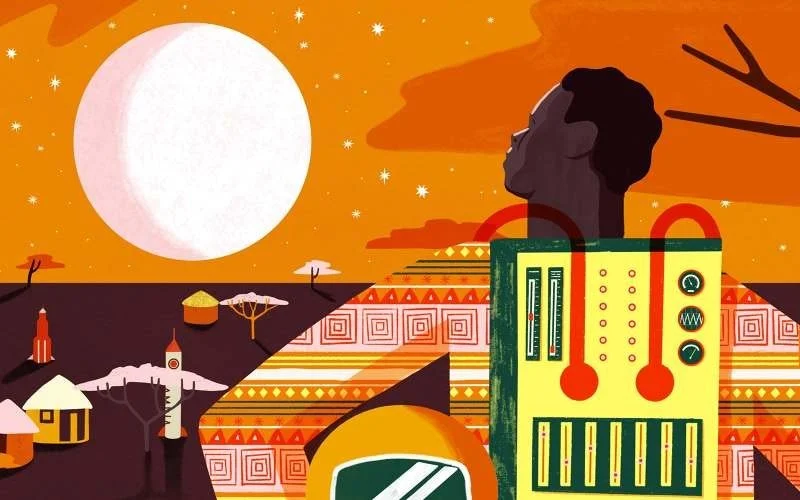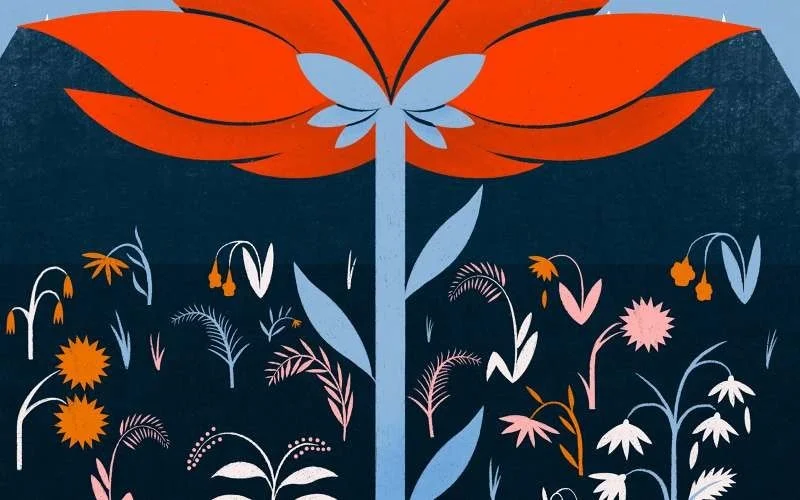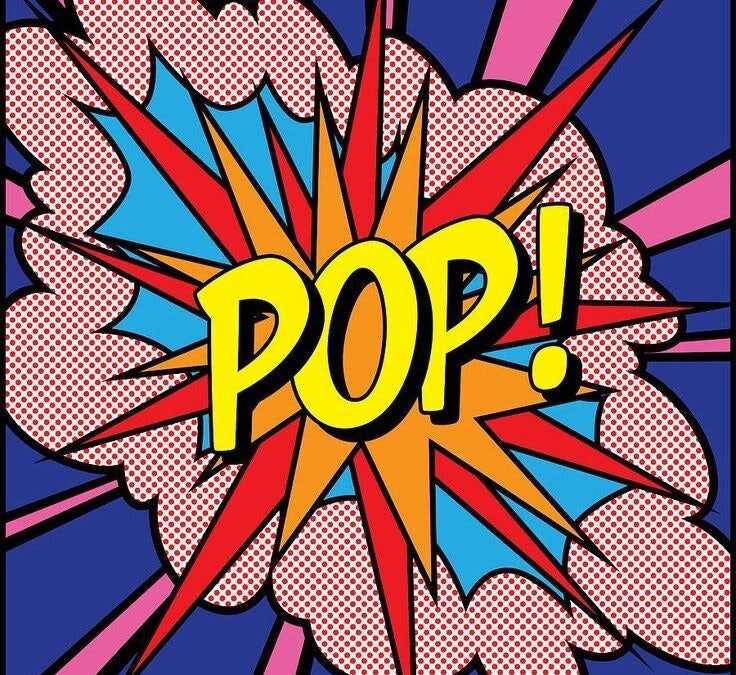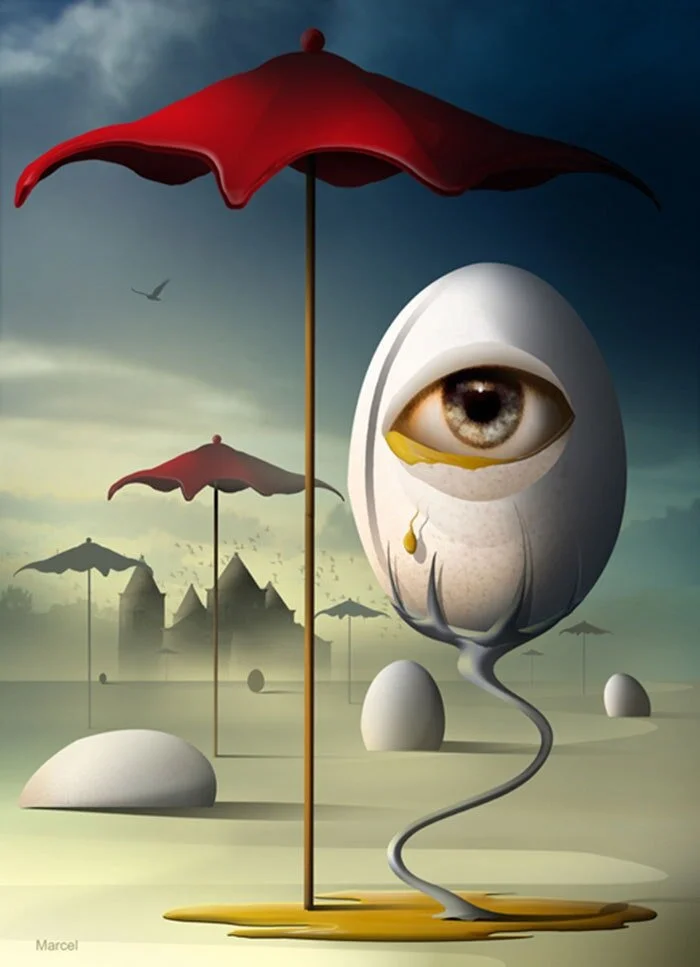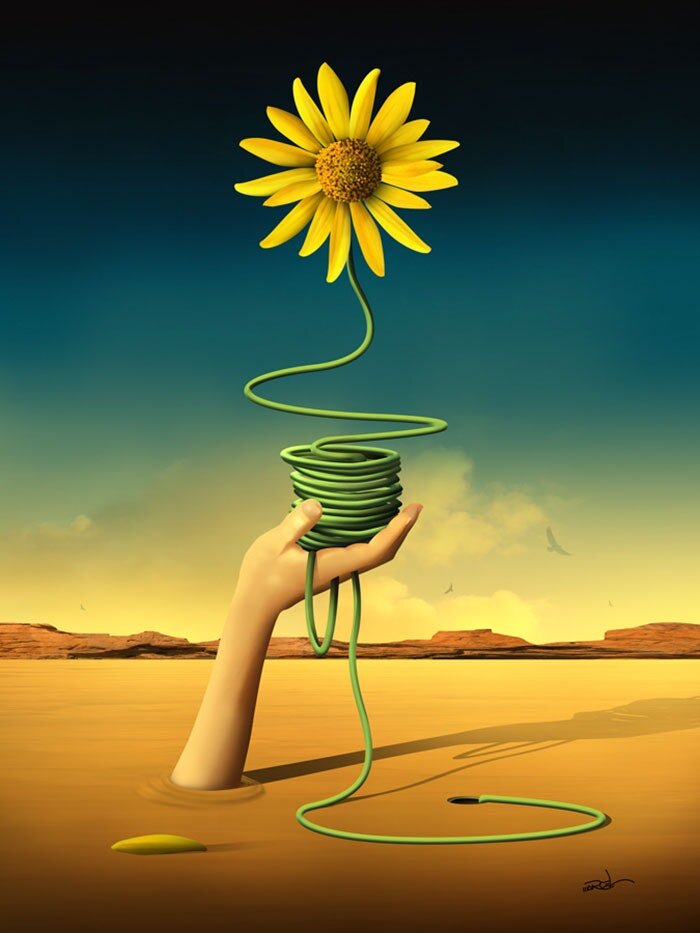10 Forecasts for the Next Decade. Part 2: Looking Ahead
Illustration by Olivia Waller
In 2010 the Economic Times of India published predictions for the next ten years.
Every one of them ended up being correct !
You can review them here: Ten Forecasts Part 1.
In this post a look ahead to the next 10 years.
Illustration by Olivia Waller
The Four Forces.
There will be four critical unstoppable forces that will carve and sculpt the future.
1.Multi-Polar Globalization: Globalization is unstoppable (many of the big challenges are global from Climate Change, Covid-19, China, to Congestion of Supply Chain). The hand wringing of some publications positing the decline of globalization are probably misguided. There is no doubt there are challenges to globalization and its flavor is changing from one that was dominated by the United States and Western Europe to one that will have many centers of influence including China and India and where strategic imperatives to ensure a steady supply of silicon chips and rare earths will impact the contours and landscape of how nations and companies navigate in the future.
2. Three Challenging Demographic Shifts: Three big demographic shifts of a) declining population, b) aging populations and c) significant differences in ethnic make-up and mindsets between young and old will challenge politicians and leaders of businesses. Most countries except for the continent of Africa have begun to go into population decline. And most Western countries and now China due to its one child policy are grappling with more and more seniors supported by fewer workers challenging everything from healthcare to financial support. In the US 10,000 people turn 65 every day and despite the fixation of marketers on the young the money is with those over 50. In the US next year, the country will turn multi-ethnic majority under 18 years old while those over 50 are dominantly Caucasian. It is not just the ethnic make-up but perspectives on social and economic issues are radically different than in past decades. And this generational gap is widespread across the world.
3. The Third Connected Age: In 1993 we entered The First Connected Age with the advent of the World Wide Web where we all connected to discover (search) and transact (e-commerce). In 2007 we expanded into The Second Connected Age where we were connected all the time (mobile) and connected to everybody (social). This decade will be The Third Connected Age where data will connect to data (AI), we will connect in new ways (Voice, Augmented Reality, Virtual Reality), we will have much faster connections (5G) and far more powerful computing (Next generation Cloud).
4. Covid-19 Shock: The fault lines of Covid-19 impact will have long lasting impact on the terrain of the future. When every single person in the entire world goes through a financial, health and social crisis that has already lasted for nearly two years and exposed new forms of fragility and resilience in everything from personal relationships to business operations to social structures many of its reverberations will cascade into the future.
Each of these forces individually are deep, wide and strong but together they will shape shift the next decade so that not only are we going to see change but a quantum rate of change!
Illustration by Olivia Waller
Ten Predictions.
1. New models of governance emerge: Most institutions at the national and international level were designed over five decades ago post World-War 2. The future will not fit in the organizations and governance of the past where we need to grapple with AI Ethics, Climate Change, Gene Technology, Data Privacy, an African-Asian future and Space Junk/Wars and much more. We needed new rules for an Industrial Age since the rules of an Agricultural Age were no longer relevant. Similarly, the legal and institutional frameworks of the past cannot get us into the future.
2. A workplace revolution: Even before Covid-19 the forces of technology, globalization and demographic shifts were challenging the ways companies were designed and run from the nature of work to the where and when work was done. The challenges that most managers face in getting people to return to the office is a symptom of a much deeper challenge which is their firms may not be designed for the reality of the future. In a world of cloud-based computing, where companies are looking for agility, flexible costs and diverse talent and where most networking and relationship building and brainstorming takes place at off-sites, events and bars/restaurants which knowledge worker company starting in 2022 would ask people to return to offices x days a week? Human interaction is often important but who said it must happen in the office? The office is going to be a museum where the artifacts of the company’s history, some senior curators and some training programs occur as part of a distributed unbundled workplace with most value and time being created in third places, events and in home offices.
Illustration by Olivia Waller
3. Saving capitalism from the capitalists: Nearly twenty years ago in 2003 two University of Chicago Business School professors (the bastion of free markets) wrote a prescient book with the title Saving Capitalism from the Capitalists where they noted:
a) The free market is the form of economic organization most beneficial to human society and for improving the human condition.
b) Free markets can flourish over the long run only when government plays a visible role in determining the rules that govern the market and supporting it with the proper infrastructure.
c) Government, however, is subject to influence by organized private interests
d) Incumbent private interests, therefore, may be able to leverage the power of governmental regulation to protect their own economic position at the expense of the public interest by repressing the same free market through which they originally achieved success.
e) Thus, society must act to "save capitalism from the capitalists"—i.e., take appropriate steps to protect the free market from powerful private interests who would seek to impede the efficient function of free markets, entrench themselves, and thereby reduce the overall level of economic opportunity in society.
Today everyone from the biggest investor in the world which is the Black Rock Group to CEO’s speak of purpose and multi-stakeholder capitalism. They do so because they realize that there is a growing backlash against the lobbying efforts of leading firms, the inability of society to reign in or understand the power of technology firms and many other factors leading to a questioning of the current system including a significant move towards socialism among youth.
Whether it be China’s dramatic moves against their billionaire class, a newly empowered and expert driven FTC and FCC in the Unites States or the fury of the disenfranchised indicates that a great re-setting will occur as we move into the future.
4. Gene therapy/bio-tech miracles: Today while we still grapple with Covid-19, life is much better for billions (almost 3 billion people have been vaccinated) because of break-through in vaccine development. The combination of the technologies of The Third Connected Age along with advances in gene-therapy and biotechnology is likely to lead to the greatest advances in health care which may not only be effective but increasingly efficient and therefore available to everyone in the world. There is a good likelihood that many types of cancers may become like AIDS which is not curable but controllable. These technologies might leap from the field of health care to also help in everything from food production to helping fight climate change.
Illustration by Olivia Waller
5. A new financial/trading eco-system: Today Square, PayPal, Coinbase are but three of a myriad number of massively valuable and fast-growing companies putting pressure on the large banks, credit card and marketplaces. We are in the early innings of a de-centralized, democratized and destructive creation phase that is completely aligned with the four forces of multi-polar globalization, three demographic shifts, The Third Connected Age and a questioning of everything mindset post Covid-19. Combine this with new marketplaces from Shopify to Etsy to StockX and access ramps to monetize creativity from Tik-Tok to Substack and fewer and fewer people are looking to the leaders of Wall Street or the City for permission or access or direction on the future of finance.
6. A renaissance in education: Learning has never been as important due to the massive increase in knowledge, the need for re-training in a world buffeted by change and the increased returns to talent when combined with technology. Covid-19 revealed both the positives and negatives of the current educational infrastructure often illustrating that education has become a luxury brand versus an empowering and enabling platform which in many ways now adds to versus eradicates inequality and where more is spent on administration and buildings and other cocktail party and “badging” puffery than on teaching. From online companies like Coursera, to Khan Academy, to companies like Google providing credentials and training to a Chinese crack down on expensive private tuition at companies like TAL and New Oriental Education there is a call for a renaissance in education especially continuing and constant training where careers last 50 years and companies last 15! Companies and countries will win on the software called the brains of their citizens. It will be key to ensure they are upgraded all the time!
Illustration by Olivia Waller
7. The Automobile Industry will be at the vanguard of future and is an industry to watch: Along with healthcare, finance and education the auto industry looms large in most countries of the world and is one that we will see the future becoming tangible first. Already Uber and Tesla have re-invented mobility. China has become the world’s largest auto market and from impacting the future of how a Mercedes is designed is building cities optimized for self-driving cars. Every major auto-company is sprinting into the future by re-tooling, re-thinking and re-imagining for an electric, semi-self-driving future as they become software companies and innovators in energy, safety and on the go entertainment and education. Terry Kawaja shared an incredible insight that the place the first true meta-verse will happen will be inside automobiles where we already have screens, voice, augmented reality, navigation and next generation entertainment systems. We do not have to put on a helmet or be isolated to live in a true blend of the real and augmented and virtual worlds.
8. Trust particularly in the areas of data, identity and privacy will become a key currency for the future of everything including Brands: Many of the big companies we rely on today for our communications and entertainment from Facebook to Google to Amazon to many others were built as Advertising Operating Systems (AOS) focused on consumers. However, because of their utility they become Society Operating Systems (SOS) but the companies were not set up to think about Citizens. Now as we enter the Third Connected Age in a world of AI, Voice, AR and VR these and other platforms could become Life Operating Systems (LOS) and we will wonder who we can trust. A company? The Government? A neutral third party? Or maybe nobody but ourselves. Many companies and leaders including Tim Berners Lee the founder of the World Wide Web who has set Inrupt, that will use PODS (personal online data stores) so we can control and monetize our own data. This is one of many companies and approaches using a wide range of technologies including the block chain to ensure that in our future lives we are not animals in a zoo of some walled garden where we are fed a medley of sugary or enraging distractions while our time and wealth are harvested and milked like cow udders.
Illustration by Olivia Waller
9. Creativity will be the key differentiator and all of us can and will be creators: Today in the US, 50 million individuals call themselves creators and many of us want to make, to build, to express. We want to create and distribute and often monetize our work. Before Squid Games took over Netflix their most popular shows were by Tik-Tok stars who earned these breaks on the strength of their talent and followings. We are living a world where Kylie Jenner has more Instagram interactions than the total combined viewership for the Superbowl, the Oscars and the Emmy’s. Today we have a creative and distribution studio on our phones and a worldwide canvas to paint on amidst a plethora of platforms and niche sites. Each one of us are creators since as Joan Didion reminds us we tell ourselves stories in order to live. Some of us may create through code, others building companies, others creating art and stories, designing shoes, podcasting or building and creating our imagined lives. In the end the technology is the plumbing and the creativity the poetry of our lives and more people in more places will be more enabled to be themselves and grow than ever before.
10. Enlightenment and connection will have greater market share than enragement and polarization: This may be as much hope as prediction but while there are significant challenges and issues, let us not forget that despite what the television screens and our doom scrolling may want us to believe, globally a greater number of people are more healthy and better off today than every before. With new advances in every form of science, with lower cost technologies and tools that allow more and more people to get connected and learn and grow and question, leaders all over are increasingly aware that the drums of change are beating in the blood stream of society and they will need to adapt or be overcome by a new wave of talent, imagination and ideas.
Ten Forecasts for the Next Decade. Part 1: Looking Back
Artwork by Gabriel Isak.
Next week’s post will attempt to identify the key trends for the decade ahead.
This week looks back at predictions made for this past decade.
In 2010 the Economic Times of India (India’s Wall Street Journal) asked me to look ahead the next decade and identify ten key trends.
This past week a decade and a year later I re-read the article and was surprised to find not only that many of the forecasts did occur but that most of them would be ones that one might predict for the future today.
So, is the world really changing fast or is it that it is moving slowly, and we humans and organizations are adapting even slower and therefore feel the speed of change?
Artwork by Gabriel Isak.
Here are 10 predictions for the decade ahead written in January 2010…
Top 10 Consumer Trends for the Decade Ahead (The Economic Times of India)
1. Anxiety for Authenticity
If there is one overwhelming trend globally after the financial folks turned out to be wanting and everyone from Bernie Madoff to many others were found to be posers, there is a great deal of skepticism among consumers as to what is fake and what is real. In such a world marketers must ensure that they, their actions, and their spokespeople are the real deals. There is a huge premium for authentic, real, and dependable in a world gone crazy and fake.
2. Celebration of Caution
Risk is questionable. The days of spending more than one earns, and deep leverage seem to be behind us at least in an extreme form. The people with savings (China and India among others) now seem to have the high moral ground over those who have been prolific in spending. Brands must recognize this resetting and be nuanced in their celebration of consumption.
Artwork by Gabriel Isak.
3. Mobility
Finally, the platform of the future appears to be clear, and it will be mobility. With over 2 billion phones we are on the cusp of a dramatic change in communications. Due to the rising affordability of smart phones, we can anticipate that between Blackberry, Google Android, Nokia Ovi and Apple iPhone the smart phone revolution will really take off in 2010 and within three years most "phones" will be mobile computers that combine real time data, social network, and highly empowering and entertaining applications.
4. Real Time Social Platforms
SMS, which is still the worlds most used communication medium, is a social platform. But with 350 million Facebook Users, tens of millions Twitter users and a range of local and international innovations (Google real time search) that combine real time and social we are going to see an explosion in the impact of both word of mouth and real time information. For instance, in many ways the best way to keep abreast of the 11/9 terror in Mumbai was twitter and real time NDTV live streams. Expect every media company and consumer brand to invest in real time listening and response in 2010.
Artwork by Gabriel Isak.
5. The Rise of The Post Digital World
The world is going increasingly digital but a) most media and marketing is analog and b) people are analog. Thus, it is wrong to become overly hysterical even in advanced digital penetration countries by screaming about "digital at the core"! What is important is people and their needs and passions at the core and most of us combine the real and virtual worlds in ways that allow us to connect, save money and time and pursue our passions. We use mobile tools to have real world meetings and we enhance real world occasions with digital augmentation. Just like Wal-Mart stores are paying a lot of attention to digital capabilities one can expect digital companies like Amazon to have analog or real-world presence. Today besides Kindle you will see Amazon stores and maybe even bookstores just like Apple has its online store and its real stores.
6. Youth Uprising
India is unique among major nations in having a demographic dividend with most of its population under 25. But we expect all over the world including in the nations that are aging fast (Japan and Western Europe and possibly China with it’s one child policy), a combination of technology, dismay with the world and inauthentic doings of the old and just plain "fed-upness" to see a generational shift. The times they are a changing as Bob Dylan sang. Marketers must take the rise of youth into account, but these are not the youth of yesteryear but people who are increasingly committed to a better world. They are folks that care about sustainability, community and leaving things better than they found it. This is not just about sex and money.
Artwork by Gabriel Isak.
7. Purpose Driven Marketing
The hardest question a brand, a marketer and a person will have to answer is " What do you stand for?" or " What is your purpose"? My sister company Leo Burnett has a great insight which notes that the increasingly in the future you will be judged by what you do and not what you say or as Leo states "Acts not Ads". We anticipate Brands and marketers will have to show and not tell and one of the filters they will be evaluated by are by their actions and how they improve society.
8. Environment
Sustainability and environment will become a key factor in how consumers evaluate brands and begin to calibrate their own behavior. Brands will need to understand their carbon footprints and be able to explain how they are being proactive about cleaning up. This will also be a "have" vs. "have-not" or rather a "why are you lecturing us you western folks?" emotion that will find itself into the nuance of marketing.
Artwork by Gabriel Isak.
9. Mongrelization
Okay this is not a real word but more powerful than globalization, which has already happened, will be mongrelization where cultures and capabilities from different nations, expertise and industries will meld and blend. Part of this will be due to global companies like Google, Samsung, Infosys, Lever and Procter. It will also come about as Reliance invests in DreamWorks and Bollywood and Hollywood give birth to something new. A huge impact of technology is the ability to share ideas and create new value.
10. Surprise
Less than four years ago the following did not exist. Facebook, Twitter, Amazon Kindle, Apple iPhone and App Store, Mumbai Terror, The Financial Meltdown, A Black American President... The most important thing about the future is to be nimble and flexible to react to the only thing that is certain among all my predictions.
The future will surprise!
Next week will share what may lie ahead…
Impact!
Roy Lichtenstein
Many want to have an impact, to make a difference, to be seen and to be heard.
One can have an impact and stand out in ways that generates attention but not admiration.
What can we learn from people who make an impact in ways that generate goodwill?
Outcomes. Scale. Iteration.
Three behaviors are commonly seen in impactful people we want to be like.
a) Outcomes: They focus. They focus on outcomes versus process. Deliverables vs drama.
b) Scale: They find ways to have a far greater radius of impact by projecting far and wide.
c) Iteration: They continuously improve and use time as an edge.
Outcomes.
Spend time one focusing on one or more of three outcomes.
a) Help make someone or something better: Impactful people we admire tend to be generous and kind. They give, share, teach, share, show and help grow an idea, a person or firm.
b) Grow skills: Practice craft. Build muscle. Learn.
c) Create / Immerse themselves in tattoo experiences: If the core of existence is experiences, impactful people create, participate, and enable in experiences that give them or others joy and ideally create tattoos in the mind by being memorable.
If one is not growing others or oneself or having an experience that is joyful or pleasant, why are we doing what we do?
Clearly in many cases we spend time on things that are difficult and unpleasant because of illness, bad luck, a lack of opportunities, or the constraints of a job.
With a little luck and help over time we need to find time to grow from these challenges, find ways to help others and to lessen the negatives and look on the optimistic side of things to have an impact.
Scale.
Successful people find ways to scale in many ways of which the three most powerful levers are those of stories, talent, and technology.
a) Stories: Stories scale. They pass from person to person. They echo across time and space. Learn to be a good storyteller and your ability to blend imagination, metaphor and insight will ripple and reverberate.
b) Talent: A powerful way to scale is through talent. By building teams and leveraging the impact of others and their skills. By teaching and growing talent, a person scales and grows through other people’s growth.
c) Technology: Today technology allows a professor teaching a class on Happiness at Yale or Justice at Harvard to share their knowledge with worldwide audiences. Modern platforms, cloud computing, powerful and democratized technologies like the mobile phone enables a person at home using Tik-Tok to end up with a top-rated television special on Netflix seen all around the world.
Embrace stories.
Surround yourself with and channel through talent.
Leverage technology.
Iteration.
The most impactful people use time as a weapon in three ways.
a) Only Asset: They realize it is the only real asset since it the one they cannot make or buy more of. If someone is wasting their time or trying to buy it for cheap the realize they are paying with their lives and they walk away as soon as they can.
b) Continuous learning: They constantly learn by reflecting on what has gone before and their experiences to improve and grow. They realize it is not experiences themselves but reflecting on experience that one grows from. Many look back at each day, celebrating what worked and try to understand from the mistakes and missteps that were made.
c) Sequencing: They sequence their days and schedule to do the things that matter the most first before they lose control of their calendars and fall into the pincers of the urgent or the cacophony of distractions and digital stream where activity is confused with productivity.
In the end there is only time and how we spend our days is how we spend our lives
Solving Problems by Leveraging Photography
Many of the techniques used by the best photographers are the ones we can use to become great at problem-solving.
The essence of photography
At its essence photography is driven by three variables:
a) Framing: What the photographer decides to focus on, how the camera is angled and positioned relative to the subject and what is left in and left out of the viewfinder.
b) Exposure/Lighting: This is a combination of aperture, shutter speed and how sensitive to light the film is (ISO speed)
c) Editing: Once upon a time with analog film only professionals had the tools of editing (darkrooms, chemicals, and papers) but today with digital capabilities of our phones we all can pre-edit by taking several test shots, give ourselves lots of editing options by taking a lot of pictures and then later with easy-to-use tools sculpt our pictures to our liking by cropping and filtering and more.
The essence of problem solving
The best problem solvers tend to be good at three factors:
a) Framing the problem by asking the right question: They want to know whether one is solving the right problem.
b) Getting the right input/data/facts so they can throw as much light on the problem: Can one get as much illumination as one can?
c) Interrogating and iterating the answer: The first answers tend to be somewhat right and often lead to additional questions or additional fine tuning before one reaches a more robust solution.
Leveraging the principles of photography to improve decision making.
Framing the problem: Three simple questions to ask before you address a problem or challenge.
a) Focus on the right problem: Often organizations and teams spin their wheels on either the wrong problem or do not frame their problem in the right context, time- horizon or challenger set.
The US Auto Industry thought their problem was to enhance quality of their hardware against the Japanese or design their exteriors and interiors to drive desire for their product against the German luxury brands when the real existential challenge was to become adept at electric and software vs Tesla and address a decline in a desire for auto ownership due to rise of Uber and Lyft.
b) Ensure differing points of view: It is critical to look at a problem from the right angle and ensure different viewpoints are included in problem definition. One reason companies miss the forest for the trees is they fail to have diverse voices and backgrounds involved in strategic problem solving. Diversity is not just critical for ideation but to understand what the issues are.
Too many traditional publications failed to adapt to digital in part due to not having technical folks and younger folks who were comfortable using digital media having a voice in the room where decisions were framed. As Boards become more diverse it is critical that they ensure that there is diversity of voices and backgrounds and not only a diversity of faces.
c) Choosing what problems to look at and what not to tackle: The best photographs often result from tight framing and often the best solutions come from the tight definition of the problem.
Many times, we might try to solve problems that are so broad that they are never solved because either it requires too many people or too many resources or too much time.
2. Ensuring the right exposure: In the world of problem solving the aperture is how much data you decide to look at, shutter speed is how much time you allocate before a decision must be made and ISO is how much leeway (graininess) is acceptable.
a) Quantity and Quality of Data: If the inputs are not correct or valid then it is unlikely the outputs will be. After framing a problem correctly, it is key to ensure that as much valid data, input, and learning is brought to the solution.
One reason the original We Work imploded was that the key data they overlooked were from the industry they really were in (real-estate leasing) and rather they focused on the ones they were not relevant (software, luxury experiences) in how they valued themselves and raised money.
b) Speed of decision making: So often problems do not get solved since there is a demand for more information, more data, and more input. Delay and dithering should be avoided by putting tight deadlines on decision making.
Too many organizations spend time ingesting lots of inputs and look at their colon in many ways but end up with no real output.
In another vernacular to solve a problem one must sooner or later emit or get off the pot.
Sometime though one rushes too fast and hurried decisions to make deadlines can also hurt an organization.
c) Sensitivity of impact of solution: If one is not going to being blowing up a photograph one really does not care about graininess and can use high ISOs to capture night views. On the other hand, if one is planning to print something on a large wall at an exhibition one must ensure much less graininess and therefore much more time and care needs to be taken.
Jeff Bezos has often noted the difference between revolving door and shut door decisions. If a decision can be revoked or changed without significant damage one needs less input and time but if a decision is difficult to undo and has long lasting or wide-ranging impact, then one must need to be more circumspect and speedier in decision making.
It is important before one begins to solve a problem one understands the sensitivity of the solution. How often have we procrastinated, and process driven a decision to death or run up huge costs in “studying a problem” when just saying yes or no quickly would have been smarter?
3. Editing the solution: The initial or first answers to a problem are not picture perfect and require three forms of editing.
a) Cropping: Sometimes the solution is correct for smaller subset of people or geography or clients and thus some honing and exceptions need to be made before announcing.
b) Filtering: This requires involving different people to look at the solution to get diversity of perspectives, interrogating the solution and particularly the inputs to ensure they were correct and interpolating with other wisdom and experience
c) Displaying and Sharing: How, when, and where one shares the solution will determine how it will be evaluated and accepted. Too often the best of solutions goes awry because the right folks were not brought into the loop before announcement, or the announcement was made without the right sensitivities or tone of voice.
Next time one solves a problem we may want to look at what makes a great photographer or a photograph and think about how we frame the problem, how we determine the process of how much data, how much time and how sensitive the impact of the solution will be and then be ready to edit and hone the solution to maximize the impact.
Photography from Sony World Photography Awards 2021 Exhibit.
On Identity
Digital Art by Marcel Caram
How do you take a measure of a person? Is it possible to understand a person?
Here are some lines from literature that say it is difficult and may be impossible
“You get them wrong before you meet them, while you’re anticipating meeting them; you get them wrong while you’re with them; and then you go home to tell somebody else about the meeting and you get them all wrong again.
The fact remains that getting people right is not what living is all about anyway. It’s getting them wrong that is living, getting them wrong and wrong and wrong and then, on careful reconsideration, getting them wrong again. That’s how we know we’re alive: we’re wrong. Maybe the best thing would be to forget being right or wrong about people and just go along for the ride. But if you can do that — well, lucky you.”
From American Pastoral by Philip Roth
Digital Art by Marcel Caram
And let us say we get a person right which person of the many identities and moods of that person did we just get right?
“We cannot live with only one identity. We all have many identities, they are liquid”
Olga Tokarczuk. Polish Author and Nobel Prize Winner for Literature.
Digital Art by Marcel Caram
And as many writers state it is sometimes hard enough to know ourselves.
“Sometimes you don’t know who you are till you put on a mask”
Alexander Chee in the Short Story “Girl” written in 2015
Digital Art by Marcel Caram
And do any of us want to be profiled and boxed and put into clusters? None of us wants to hear that somebody has our “number”. The poet TS Eliot best verbalizes this in a stanza from “The Love Song of Alfred J Prufrock”
And I have known the eyes already, known them all— The eyes that fix you in a formulated phrase,
And when I am formulated, sprawling on a pin,
When I am pinned and wriggling on the wall,
Then how should I begin to spit out all the butt-ends of my days and ways?
And how should I presume?
Digital Art by Marcel Caram
Emotional Intelligence can help in understand our selves and others. It can bring meaning to an age of math and reduce the “algos” which in Latin means “pain” in the algorithmically tuned streams that colonize our minds.
In the book “Untangled: Guiding Teenage Girls through Seven transitions into Adulthood” is one of the best definitions of Emotional Intelligence I have come across:
“Seeing yourself from the outside and seeing others from the inside”
Digital Art by Marcel Caram
“We don’t see things as they are. We see them as we are” anonymous
In many ways what makes us “us”, in addition to our genetics and experiences, is what we put into our minds which include the books, movies, tv shows, music, social media streams, magazines and much more that we ingest as well as the people we meet and places we visit.
This means we are constantly changing and if it is difficult to understand ourselves, true empathy is understanding that we may never understand anyone else.
Digital Art by Marcel Caram
Privacy and Identity
In 2014 at a TED Global Conference in Rio de Janeiro, Brazil, the journalist Glenn Greenwald gave one of the finest talks on why privacy is important.
It is a must watch.
Privacy is important because we are not who we are when somebody is watching…
When someone negatively impacts our privacy, they might prevent us from being ourselves.
In a quest to identify and put us in a box they may impact the very identity they are trying to understand.
Digital Art by Marcel Caram
The private, the personal, data and true understanding.
David Orr is a poetry critic for the New York Times who a few years ago wrote a book called “Beautiful and Pointless”. In the opening chapter titled “the personal” he seeks to show how “private” and “personal” are two very different things.
David provides a list of sentences:
Bob Smith was born on November 9, 1971.
Bob Smith’s favorite password is “nutmeg456”
Bob Smith’s Social Security number is 987-65-4320
Bob Smith has a foot fetish.
As a child, Bob Smith had an imaginary friend named Mr. Pigwort.
Whenever Bob Smith hears a high wind, it makes him think of his wife, who died ten years earlier, and he hears her voice faintly calling, as if from a great distance.
He notes that the first three sentences contain deeply private information, but they don’t seem personal like the last three.
Mr. Orr then states:
“The point here is that our conception of “the personal” has to do more than the data of our lives, no matter how sensitive. It has to do with how we see ourselves, how we see others, how we imagine others see us, how they actually see us, and the potential embarrassment, joy, and shame that occur at the intersection of these different perspectives”
In an age obsessed with data we often believe that data can explain, and data can convince.
To a point it might, but we should never forget that meaning lies within us and combines emotion and rational thinking.
We often barely know ourselves and can be two different people in two different moods.
Because we choose with our hearts and use numbers to justify what we just did.
And we need space and privacy to be who we are.



